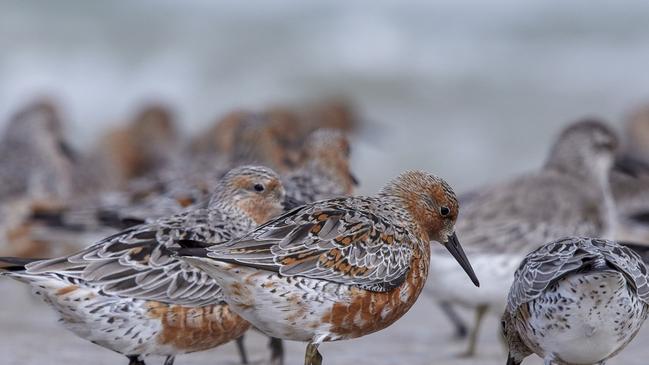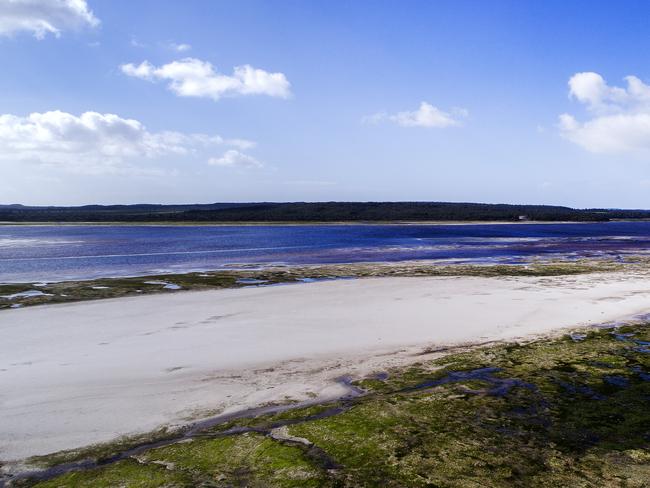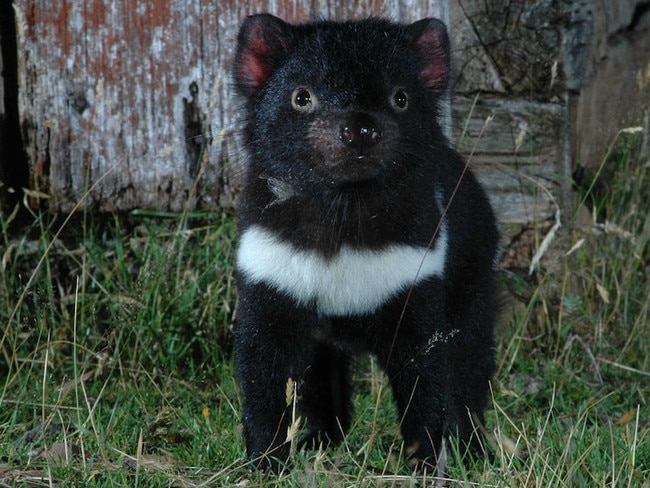Conditions list revealed for controversial $1.6 billion Robbins Island wind farm development
Fines of $100,000 per dead wedge-tailed eagle or orange-bellied parrots, but no fee for other endangered birds. Read more about the list of conditions for the green-lit Robbins Island wind farm.

Tasmania
Don't miss out on the headlines from Tasmania. Followed categories will be added to My News.
Details of a controversial 100-turbine, $1.6 billion wind farm that will go ahead at remote Robbins Island have been released, with a long list of conditions that environmentalists say won’t adequately protect native fauna.
The conditions faced by Philippines-based renewable energy company ACEN include that it must pay $100,000 for the wind turbine death of any wedge-tailed eagle or orange-bellied parrot – but will not have to foot the same cost for migratory shorebirds like the rich curlew sandpiper, far eastern curlew and great knot.
Earlier this month, the Tasmanian Civil and Administrative Tribunal approved the wind farm development, which includes up to 100 turbines with a total electricity-generating capacity of 900 megawatts, with a height each up to 212 metres.
The massive development on the 9900ha island will also include a bridge, wharf, internal site access roads, transmission infrastructure, a maintenance and services facility and temporary workers’ accommodation that will be removed at a later date.
The decision was slammed by environmentalists, who say renewable energy company ACEN will now turn Robbins Island into a “vast industrial complex”.
The outcome has arrived after a lengthy battle waged by a number of opponents – including Birdlife Tasmania, the Bob Brown Foundation and the Circular Head Coastal Awareness Network – which chiefly focused on impacts on the critically-endangered orange-bellied parrot and the island’s Tasmanian devil population.
The Environmental Protection Authority (EPA) joined the fight at a later stage, arguing for a long set of conditions that have now largely been added to a list of requirements by the Circular Head Council.

In its newly-published decision, which includes the conditions of both bodies, the tribunal upheld an EPA requirement that ACEN trial the use of one black or striped blade in areas of “greater perceived eagle collision risk” – and maintain its use if the trial was successful.
However, the tribunal dismissed a recommendation by Birdlife Tasmania that ACEN should pay $100,000 to the Cradle Coast Authority’s saltmarsh recovery program for the wind farm death of certain migratory birds – although it must pay for the death of each wedge-tailed eagle and orange-bellied parrot.
ACEN has been approved to install 100 wind turbines, compared to the 122 previously proposed – and must have a detailed lighting plan to minimise impacts on birds.
Exclusion zones and monitoring plans have been factored in for a number of animals including the grey goshawk, the eastern hooded plover, the Tasmanian masked owl, Tasmanian devils, the green and gold frog, and the Marrawah skipper.

Bob Brown said Tasmania’s global reputation for “naturalness” had been dealt a “sickening blow” by the decision to give the green light to an “environmental monstrosity”.
He said “foreign big business interests” had been put ahead of Tasmania’s natural environmental wellbeing, with the casualties being the orange-bellied parrots, wedge-tailed eagles, rare migratory shorebirds and the only natural population of Tasmanian devils still free of the facial tumour disease.
More Coverage
Originally published as Conditions list revealed for controversial $1.6 billion Robbins Island wind farm development





